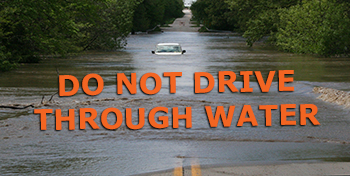The Importance of Weather Monitoring Systems
Weather monitoring systems play a crucial role in today’s society, providing valuable data and insights that help us understand and prepare for various weather conditions. These systems utilize advanced technology to collect, analyze, and disseminate information about the atmosphere, enabling us to make informed decisions and mitigate potential risks.
How Weather Monitoring Systems Work
Weather monitoring systems consist of a network of sensors, satellites, radar systems, and computer models that work together to gather data on temperature, humidity, wind speed, precipitation, and other meteorological variables. This data is then processed and analyzed to generate weather forecasts, warnings, and alerts that are essential for public safety and resource management.
The Benefits of Weather Monitoring Systems
One of the primary benefits of weather monitoring systems is their ability to provide early warnings for severe weather events such as hurricanes, tornadoes, floods, and blizzards. By detecting changes in atmospheric conditions in real-time, these systems help authorities issue timely alerts and evacuation orders to protect lives and property.
In addition to forecasting extreme weather events, weather monitoring systems also contribute to everyday activities such as agriculture, transportation, aviation, and energy production. Farmers rely on accurate weather forecasts to plan their planting schedules and irrigation practices. Airlines use weather data to optimize flight routes and avoid turbulence. Energy companies monitor weather patterns to predict demand for electricity and natural gas.
The Future of Weather Monitoring Systems
Advancements in technology continue to enhance the capabilities of weather monitoring systems. Artificial intelligence algorithms are being used to improve the accuracy of forecasts by analyzing vast amounts of data in real-time. Remote sensing technologies like drones and satellites enable us to monitor weather conditions in remote or inaccessible areas.
As climate change brings more frequent and intense extreme weather events, the importance of reliable weather monitoring systems cannot be overstated. By investing in cutting-edge technology and expanding our network of sensors worldwide, we can better prepare for the challenges posed by a changing climate.
Understanding Weather Monitoring Systems: Key FAQs Answered
- What is a weather monitoring system?
- How do weather monitoring systems work?
- What are the benefits of using weather monitoring systems?
- What technologies are used in weather monitoring systems?
- How accurate are weather forecasts generated by monitoring systems?
- How can weather monitoring systems help in disaster preparedness and response?
What is a weather monitoring system?
A weather monitoring system is a sophisticated network of instruments and technologies designed to collect, analyze, and interpret atmospheric data to provide valuable insights into current and future weather conditions. These systems consist of various components such as sensors, satellites, radar systems, and computer models that work together to measure parameters like temperature, humidity, wind speed, and precipitation. By continuously monitoring these variables, weather monitoring systems help meteorologists forecast weather patterns, issue warnings for severe weather events, and provide essential information for public safety and resource management. Ultimately, a weather monitoring system serves as a critical tool in understanding and preparing for the dynamic nature of our atmosphere.
How do weather monitoring systems work?
Weather monitoring systems operate through a sophisticated network of sensors, satellites, radar systems, and computer models that collectively gather and analyze meteorological data. These systems track various atmospheric variables such as temperature, humidity, wind speed, and precipitation to generate accurate weather forecasts and warnings. By continuously monitoring changes in weather conditions in real-time, weather monitoring systems provide essential information for decision-making in diverse sectors ranging from public safety to agriculture and transportation. The integration of advanced technology ensures that these systems play a crucial role in enhancing our understanding of the atmosphere and enabling proactive measures to mitigate the impact of severe weather events.
What are the benefits of using weather monitoring systems?
Weather monitoring systems offer a multitude of benefits that are essential for various aspects of our lives. These systems provide early warnings for severe weather events, enabling timely responses to protect lives and property. Additionally, they support everyday activities such as agriculture, transportation, aviation, and energy production by offering accurate weather forecasts. Weather monitoring systems play a crucial role in optimizing decision-making processes and resource management, ultimately enhancing safety, efficiency, and overall preparedness in the face of changing weather conditions.
What technologies are used in weather monitoring systems?
Weather monitoring systems utilize a variety of advanced technologies to gather and analyze meteorological data. Some of the key technologies commonly used in these systems include sensors for measuring temperature, humidity, wind speed, and precipitation. Radar systems are employed to track storms and detect precipitation patterns. Satellites provide a bird’s-eye view of weather patterns from space, offering valuable information on cloud cover, sea surface temperatures, and atmospheric conditions. Computer models play a crucial role in processing vast amounts of data and generating accurate weather forecasts. Together, these technologies work in tandem to enhance our understanding of the atmosphere and improve our ability to predict and respond to changing weather conditions effectively.
How accurate are weather forecasts generated by monitoring systems?
Weather forecasts generated by monitoring systems are generally quite accurate, thanks to advancements in technology and data analysis. These systems utilize a combination of historical data, real-time observations, computer models, and satellite imagery to predict future weather conditions. While no forecast can be 100% precise due to the inherent complexity of the atmosphere, modern weather monitoring systems have significantly improved forecast accuracy over the years. Meteorologists continuously refine their models and algorithms to enhance prediction capabilities, resulting in reliable forecasts that help individuals, businesses, and governments make informed decisions based on upcoming weather patterns.
How can weather monitoring systems help in disaster preparedness and response?
Weather monitoring systems play a critical role in disaster preparedness and response by providing timely and accurate information about impending weather events. These systems can track the development of hurricanes, tornadoes, floods, and other natural disasters, allowing authorities to issue early warnings and evacuation orders to at-risk populations. By monitoring meteorological data such as temperature, humidity, wind speed, and precipitation levels, weather monitoring systems enable emergency responders to assess the severity of a situation and allocate resources effectively. This proactive approach helps communities prepare for disasters, minimize potential damage, and save lives during emergency situations.




